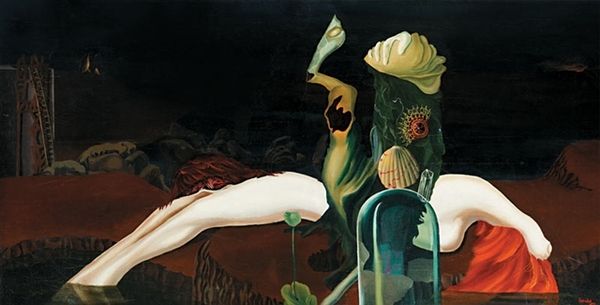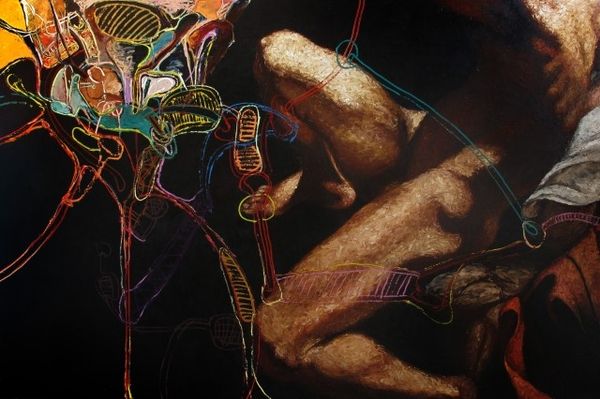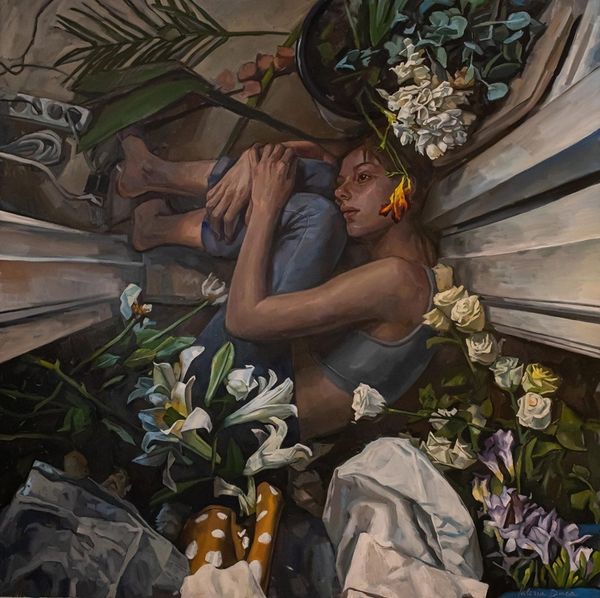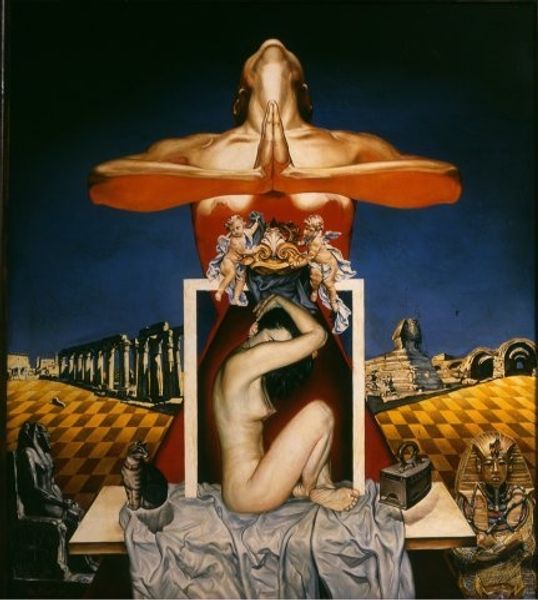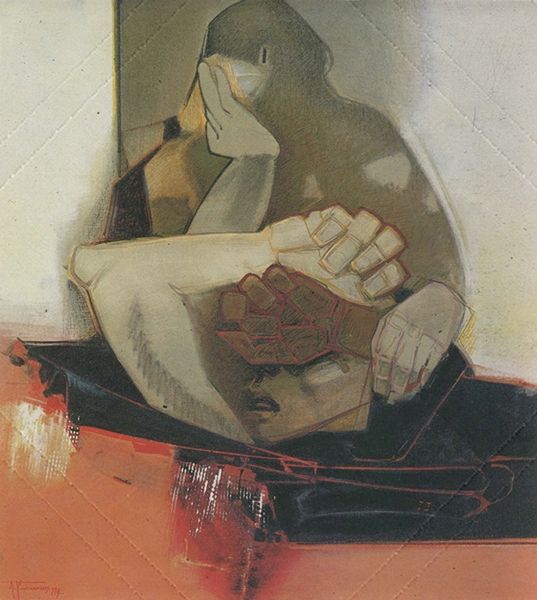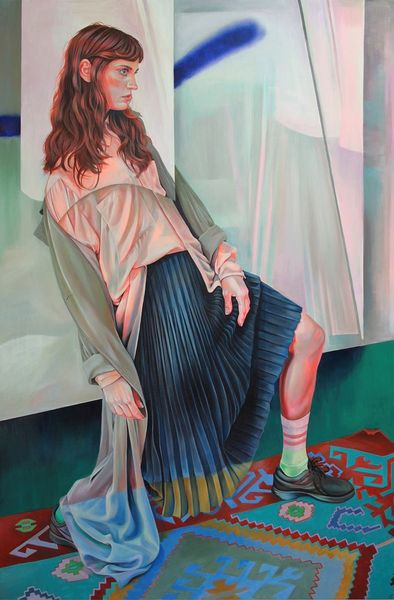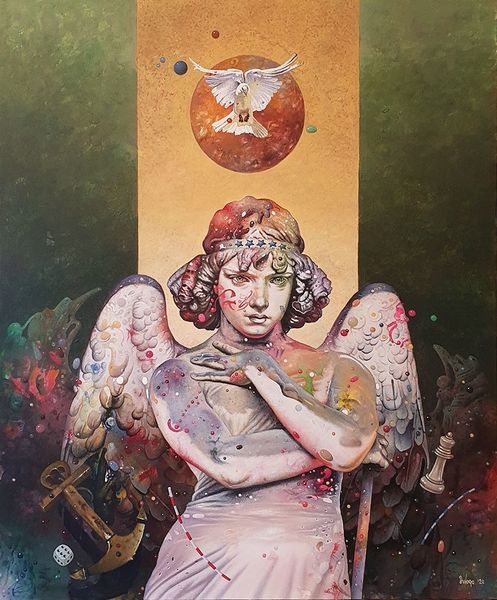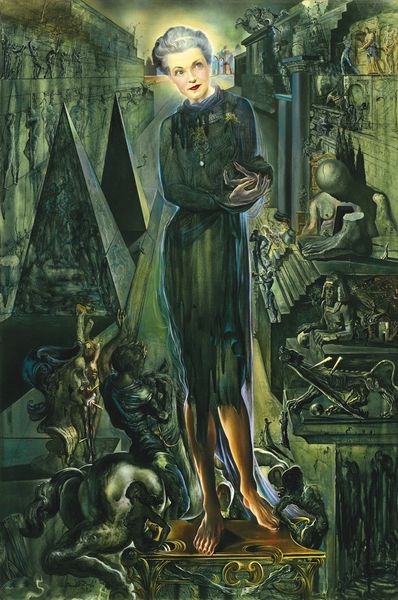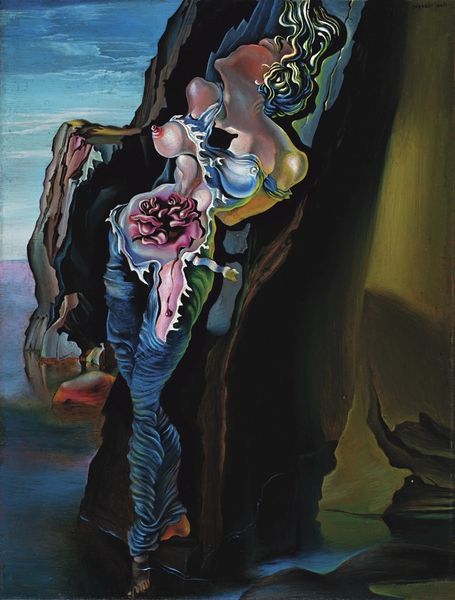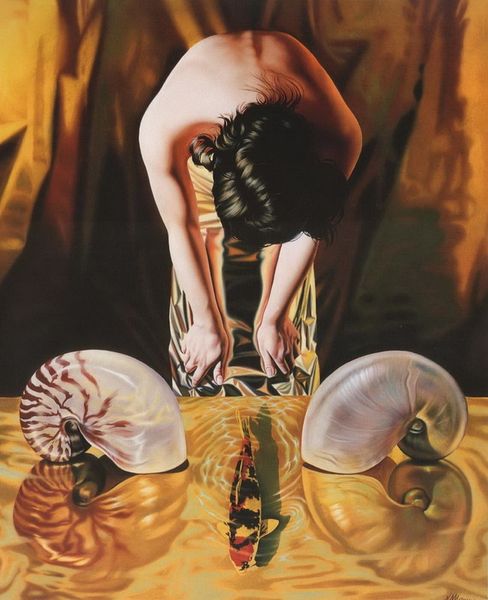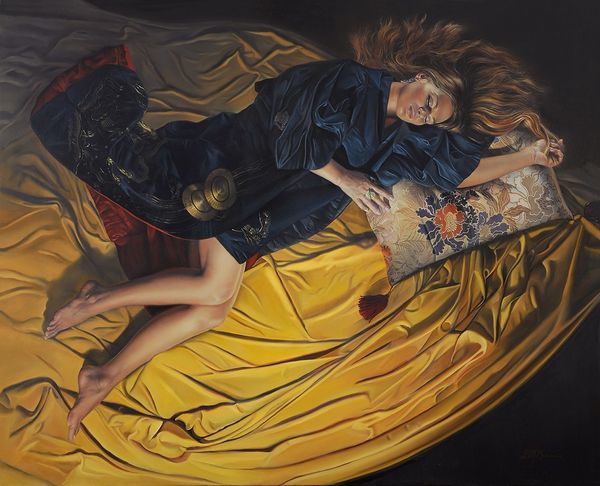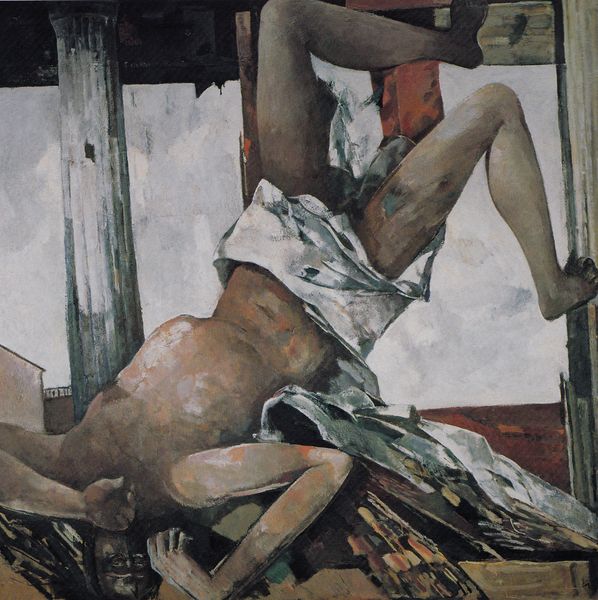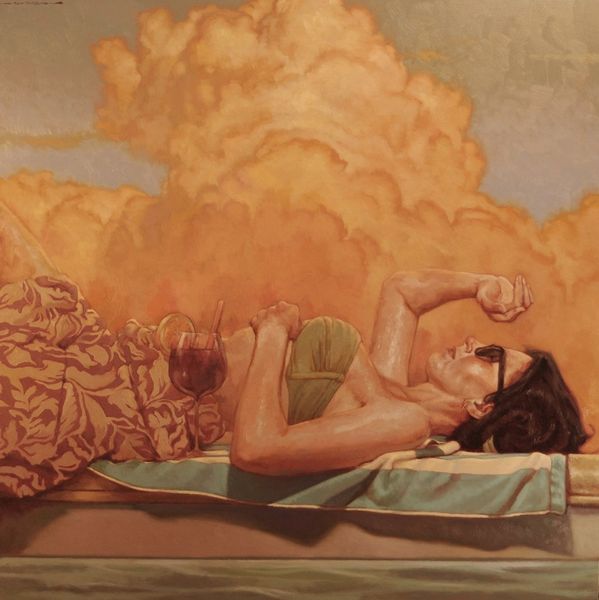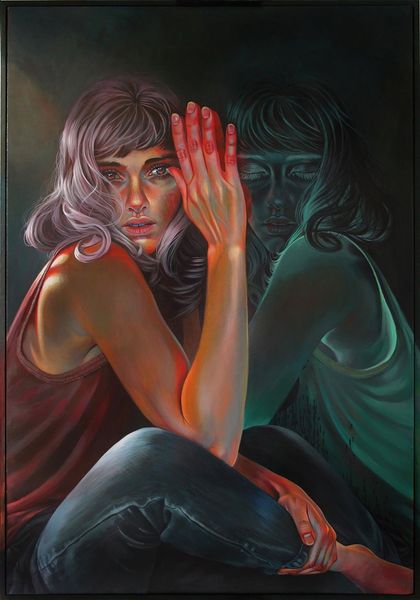
Copyright: Andre Masson,Fair Use
Editor: This is André Masson’s “Gradiva” from 1939, done with oil paints. The fragmented body, the stark lighting…it feels very unsettling, almost like a nightmare frozen on canvas. What do you see in this piece? Curator: I see a profound exploration of trauma and the female form within a patriarchal framework. Masson’s engagement with Surrealism offers us a lens to unpack repressed desires and anxieties, especially relevant considering the rise of fascism in Europe at the time. The fractured figure and violent coloration speak to a world teetering on the edge of war, and perhaps even to internal conflicts with gender and power. How do you think Masson is using classical mythology? Editor: I confess, I'm not very familiar with the Gradiva myth... Curator: The myth itself is about a woman, Gradiva, a figure of female beauty and a point of obsession in the eyes of men. Now, think about how Masson distorts and fragments her body. He isn't celebrating female beauty, is he? Editor: No, definitely not. It’s as if he's deconstructing it, or showing its vulnerability. Curator: Precisely. And notice the dreamlike setting, almost a stage for a psychological drama. What does the landscape surrounding the figure suggest to you? Editor: Danger? There's something volcanic, and the flowers look like poppies—symbols of sleep and maybe death? Curator: Excellent observation! Masson is playing with loaded symbols and unsettling juxtapositions. This reflects how art can dissect social power structures by disrupting and challenging idealized or harmful representations. Understanding the political situation in 1939 alongside prevailing psychoanalytical concepts offers rich insights. Editor: That makes the artwork even more powerful. It's not just a painting, it’s a historical and psychological statement. Curator: Exactly. And hopefully, examining artworks such as "Gradiva" encourages more expansive discussions that relate art history with contemporary intersectional understandings of gender, power, and trauma.
Comments
No comments
Be the first to comment and join the conversation on the ultimate creative platform.
